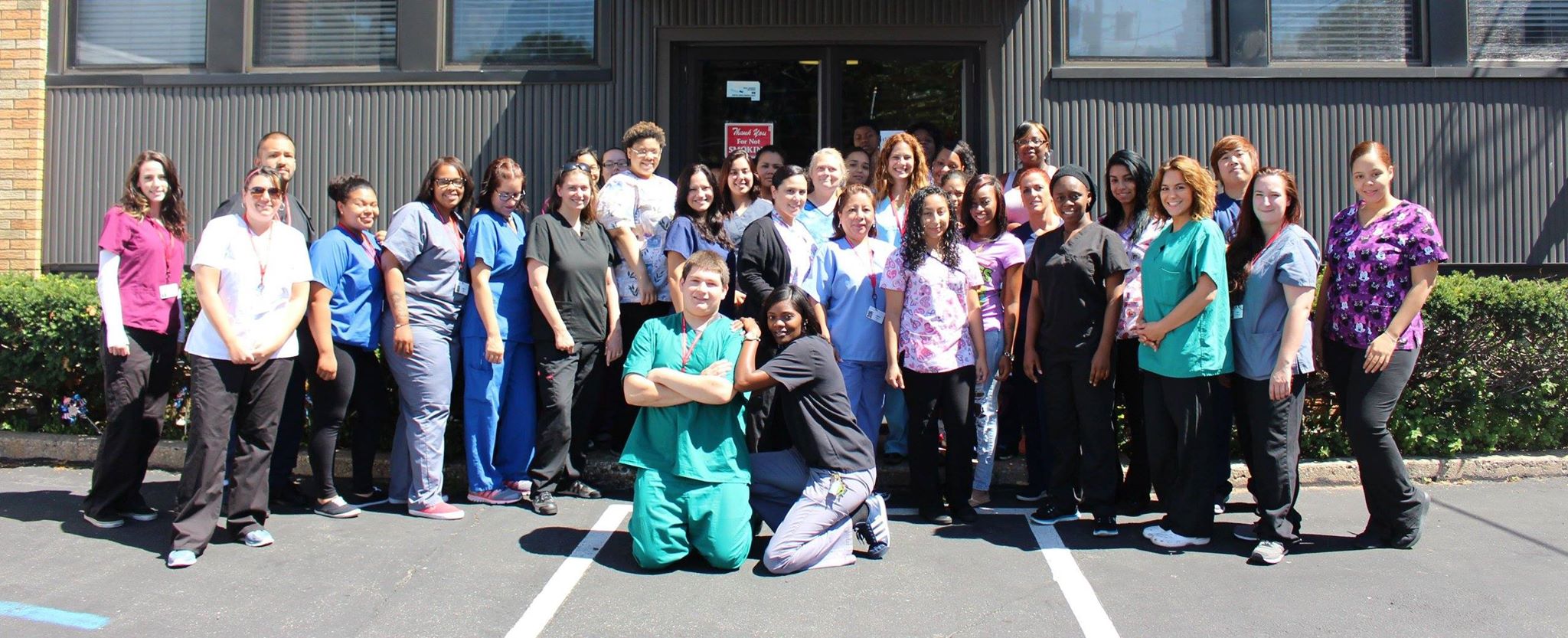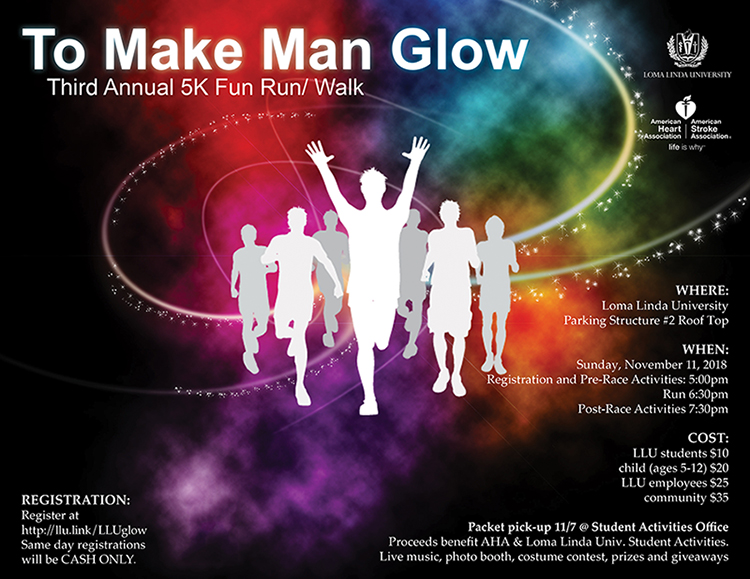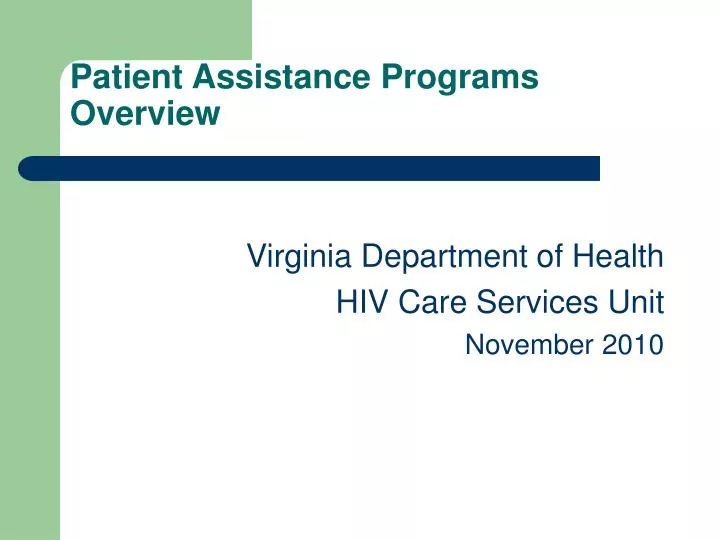
What is a patient assistance program (PAP)?
Patient assistance programs (PAPs) help people with no health insurance and those who are underinsured afford medications. These programs are managed by pharmaceutical companies, nonprofits, and government agencies. PAPs may cover the full cost of medications or provide a discount.
What are the costs associated with patient assistance programs?
In most cases, there is no cost associated with patient assistance programs. If there are any costs for the program, it will be displayed in the profile for the pharmaceutical company whose medication you are inquiring about. Many PAP's provide their medication completely free or at a significant discount off the uninsured cost.
What is a patient assistance program in pharmacy?
Patient Assistance Programs. There is help available for many people who can't afford their medicines. These programs, frequently called patient assistance programs (PAPs), are designed to help those in need obtain their medicines at no cost or very low cost.
What is prescription assistance and how does it work?
Prescription assistance can be offered in the way of Patient Assistance Programs (PAPs), which are created by pharmaceutical companies to provide free or discounted medicines to people who are unable to afford them. Each program has its own qualifying criteria.

Why do pharmaceutical companies offer patient assistance programs?
They increase demand, allow companies to charge higher prices, and provide public-relations benefits. Assistance programs are an especially attractive proposition for firms that sell particularly costly drugs. Faced with high out-of-pocket costs, some patients may decide against taking an expensive medication.
What is patient assist?
Pharmaceutical manufacturers may sponsor patient assistance programs (PAPs) that provide financial assistance or drug free product (through in-kind product donations) to low income individuals to augment any existing prescription drug coverage.
What is USA medical prescription assistance program?
The Emergency Prescription Assistance Program, or EPAP, helps people in a federally-identified disaster area who do not have health insurance get the prescription drugs, vaccinations, medical supplies, and equipment that they need.
What is patient Assistance Program Canada?
PAPs offer trained staff members who help patients investigate their available coverage options. With access to a private infusion clinic, private drug plans may cover the drug but may require the patient to pay co-insurance.
Is GoodRx a government program?
GoodRx Holdings, Inc. is an American healthcare company that operates a telemedicine platform and a free-to-use website and mobile app that track prescription drug prices in the United States and provide free drug coupons for discounts on medications. GoodRx checks more than 75,000 pharmacies in the United States.
What is Pfizer Assistance Program?
Pfizer RxPathways® patients in need get access to their Pfizer medicines. Today, Pfizer RxPathways® connects eligible U.S. patients to a range of Pfizer assistance programs that provide insurance support, co-pay help, and medicines for free or at a savings.
Is patient assistance program legitimate?
Patient assistance programs (PAPs) are usually sponsored by pharmaceutical manufacturers and are promoted as a safety net for Americans who have no health insurance or are underinsured.
What sources of assistance are available for medical and prescription needs?
There are several ways you can get help paying for your prescription medicine.Private and public health insurance. Many people have health insurance. ... State and community programs. Some state governments offer affordable medicine programs. ... Private programs. ... Patient-assistance programs. ... For more information.
Is Medicaid a insurance?
1. Medicaid is the nation's public health insurance program for people with low income. Medicaid is the nation's public health insurance program for people with low income. The Medicaid program covers 1 in 5 Americans, including many with complex and costly needs for care.
How does a patient support program work?
A patient assistance or support programs (PAPs or PSPs) exist to get you timely access to medication and to help you stay on track of your therapy. Being diagnosed with a complex disease or condition may come with unexpected financial burden and a need to better understand treatment options and next steps.
How do I get free prescriptions in Canada?
Under the Canada Health Act, prescription drugs administered in Canadian hospitals are provided at no cost to the patient. Outside of the hospital setting, provincial and territorial governments are responsible for the administration of their own publicly-funded drug plans.
Who at Innomar provides payment solutions for patient copay portions?
AvidityHealth: Financial assistance and payment solutions AvidityHealth provides comprehensive financial assistance and payment solutions to the pharmaceutical industry through our industry leading team, Cameron Stewart LifeScience (CSL).
How do you assist a patient?
Checklist 28: Ambulating a PatientPerform hand hygiene.Check room for additional precautions.Introduce yourself to patient.Confirm patient ID using two patient identifiers (e.g., name and date of birth).Listen and attend to patient cues.Ensure patient's privacy and dignity.Assess ABCCS/suction/oxygen/safety.More items...•
What are levels of assistance?
0:008:39Levels of Assistance | OT DUDE Occupational Physical TherapyYouTubeStart of suggested clipEnd of suggested clipAs well examples of levels assistance for non-physical categories include comprehension expressionMoreAs well examples of levels assistance for non-physical categories include comprehension expression social interaction problem solving and memory. Before we dive into the specific levels of assistance.
What are types of patient transfers?
Transfers involve moving a patient from one flat surface to another, such as from a bed to a stretcher (Perry et al., 2018). Types of hospital transfers include bed to stretcher, bed to wheelchair, wheelchair to chair, and wheelchair to toilet, and vice versa.
How do you assist patient with movement?
Keep your knees flexible and your back straight. To assist the patient, lift their shoulders with one hand and use your other hand to move their legs off the bed. Keep your body in front of the patient. Ensure the patient is stable before having them scoot forward so their feet can touch the floor.
What is drug assistance?
Drug assistance programs—another term for patient assistance programs—can also be offered by state programs or independent third-party nonprofits/charitable organizations. Whether a patient qualifies for these programs will depend on their insurance and the prescribed therapy. Patients typically qualify for these programs if they do not have ...
Who sponsors drug assistance programs?
Drug assistance programs are usually sponsored by life sciences organizations (manufacturer- sponsored), non-profit or charitable foundation-sponsored, or a combination of the two. Usually, they also fall into these categories:
Why are patients more likely to abandon their prescriptions at the pharmacy counter?
As out-of-pocket costs increase, patients are more likely to abandon their prescriptions at the pharmacy counter. To avoid this outcome and improve patient adherence, pharmaceutical manufacturers are more likely to sponsor patient assistance programs.
Can patients receive medication for little or no cost?
Patients who qualify for patient assistance programs can receive medication for little or no cost, helping the most in-need patients gain access to therapy if they cannot afford the typical drug pricing.
What Are Patient Assistance Programs?
Patient Assistance Programs (PAPs) are programs that help low-income patients pay for the cost of their prescriptions. These medication assistance programs are typically offered by pharmaceutical companies, health and human service departments, or nonprofits. The programs are offered as a safety net to ensure that individuals who are considered low-income or uninsured are able to afford their medications. Having insurance does not guarantee that an individual will be able to afford their prescriptions, because even individuals with employer health insurance, Medicare, and Medicaid sometimes need assistance with the cost of medications. Even with these types of insurance, many people are still burdened by the coverage gaps and formulary restrictions. This is where the Patient Assistance Programs step in to provide financial assistance to help those patients obtain their prescriptions for little or no cost.
How many assistance programs are there in Wisconsin?
There are 2 assistance programs in Wisconsin; Senior Care and Wisconsin Chronic Disease Program.
What is state pharmaceutical assistance?
State Pharmaceutical Programs. You can also find help paying for medications through State Pharmaceutical Assistance Programs (SPAP). These programs are sponsored by each state and provide residents with help paying for prescription drugs and other medical costs like dialysis and HIV/AIDS treatment.
What is a needy med?
Needy Meds. Needy Meds is a very thorough resource when it comes to prescription cost assistance. They offer a “drug search” which allows you to find patient assistance programs, coupons, rebates, and other discounts to help you pay for medicines.
What is the ADAP program?
The AIDS Drug Assistance Program (ADAP) assists individuals with HIV/AIDS. To apply for this program call 855.362.0658.
What is GSK patient assistance?
GSK Patient Assistance Program. GSK offers help paying for prescriptions, vaccines, copayments, and oncology products. Eligibility is based on a number of factors, however, a general requirement is a patient NOT have prescription coverage. You can use the GSK eligibility survey to see if you qualify for assistance.
What is the Pan Foundation?
PAN Foundation. The PAN Foundation helps you to find patient assistance programs that you qualify for based on disease or a specific medication that you are taking. Like the other patient assistance programs in this section, the PAN Foundation makes it very easy to learn about programs that you could qualify for.
What is patient assistance?
Patient assistance programs provide medications for free or at a reduced cost for individuals who are uninsured or underinsured and can’t afford their medication.
How do discount cards help patients?
Patients can then receive lower cost prescriptions by showing their discount card at participating pharmacies.
Does Medicare cover prescriptions?
While employer health insurance and government programs like Medicare offer prescription coverage for many Americans, there are still a large number of people who fall through the coverage gap.
What are Patient Assistance Programs?
Patient Assistance Programs (or PAPs) are programs offered by pharmaceutical companies to offer free or reduced-cost medications to low-income, underinsured, or uninsured individuals. Each medication can have its own PAP and eligibility requirements.
How We Can Help
Many patient assistance programs exist. Finding out which, if any, programs you're eligible for can be a daunting task (especially if you take multiple medications). That's where we come in. We help you:
Our Background and Leadership
PatientAssistance.com is a nonprofit organization that helps Americans save money on the cost of prescription drugs. We were founded in 2008 by healthcare industry veterans Rex Bowden Jr. and Rex Bowden Sr.
What are Patient Assistance Programs?
Commonly referred to as PAPs, Patient Assistance Programs are services offered by pharmaceutical companies for those who cannot afford their medication. Patient assistance programs are available to low-income individuals or families who are under-insured or uninsured and are provided to those who meet the eligibility guidelines. Assistance may range from reduced cost of drugs to free medicine. Each drug that a company offers will have its own unique program and may even have a different eligibility requirement than the other drugs they offer. As there is no unified standard of designation for these programs, you may also see them referred to as medication assistance programs, indigent drug programs, and charitable drug programs.
How to obtain a patient enrollment form?
Some enrollment forms can only be acquired by having the physician contact the pharmaceutical company directly. By making contact with your physician, the company can determine eligibility before the form has been submitted. Please see the profile for the patient assistance program you're inquiring about for further details on what is required from your physician.
What steps do you need to take?
Yes. Although eligibility differs from program to program, they all have three specific criteria in common.
What other material will I need to provide besides the enrollment form?
Many pharmaceutical companies will require additional material to be submitted along with your completed enrollment form. As stated before, there are no unified guidelines for what each company requests, but you can expect that many of them will require similar information. Below you will find a list of the information most commonly requested by patient assistance programs.
What is required of my physician during the enrollment process?
While they're are some enrollment processes that do not require interaction from your physician; many request that they provide answers to question on the form or directly sign it. Each patient assistance program enrollment will detail what information they will need from your physician. As stated before, there are no unified guidelines for what each company requests, however you can expect that many will require similar information. Below you will find a list of the information most commonly requested from your physician.
Is patient assistance mandated?
Patient Assistance Programs are not mandated or managed by the federal government and are offered as a free service by the pharmaceutical industry.
What insurance do you need to get medical assistance?
Patient must be insured by Medicare, Medicaid or military benefits, and insurance must cover the medicine for which patient seeks assistance
What is a senior program?
Programs are for seniors and/or people with certain chronic conditions; The programs assist low-income seniors and adults with disabilities in paying for their prescription drugs
What is the purpose of the asthma coupons?
They compile coupons and prescription assistance information to help patients and families find free or reduced-cost asthma medicines.
Can you combine Kroger RX savings with Medicaid?
Yes – Individuals = $36/year; Families up to 6 members = $72/year. Yes, but the Kroger Rx Savings Club cannot be combined with any federal or state-funded programs such as Medicare or Medicaid. Washington State residents are not eligible.
Is AZandMe a copay?
800-AZandMe (292-6363) Yes, for eligible individuals. A copay program and an assistance program are available depending on eligibility. Genentech and Novartis (Xolair) 888-941-3331. Yes, for eligible individuals. A copay program and an assistance program are available depending on eligibility.
Does Medicare cover Dupixent?
Yes, if you do not have prescription insurance coverage through Medicaid, Medicare Part D or other insurance. Ayuda disponible en español. Sanofi (DUPIXENT®) 844‑387‑4936 (option 1) Only if your insurance does not cover DUPIXENT. A copay assistance program depending on eligibility.
What is prescription assistance?
Prescription assistance can be offered in the way of Patient Assistance Programs (PAPs), which are created by pharmaceutical companies to provide free or discounted medicines to people who are unable to afford them. Each program has its own qualifying criteria.
What is the most common problem patients encounter when completing the application forms?
The most common problem patients encounter when completing the application forms is lack of physician cooperation. Over and over I hear from people whose physicians just won't complete the forms — or charge to do it. I am asked what they should do.
How to find PAPs?
To find PAPs on NeedyMeds.org, click on the Patient Savings tab on the top navigation bar. When the dropdown categories appear, you will see a Save on Prescriptionsection. Click on Brand Name Drugsor Generic Name Drugsdepending on how your prescription is written . Either of these pages will easily guide you to searching for prescription assistance programs for your medications.
What is help with paperwork?
Help with Paperwork is a searchable database of local programs or individuals who help people take advantage of PAPs, such as finding programs, assist in completing the application forms and contacting physicians for signatures. Look for all of your medications, not just the most expensive ones.
Can you afford PAPs?
Millions of people use PAPs to get the medicines they need but can't afford . If you can't afford your medicines, a prescription assistance program may be able to help you. Richard J. Sagall, M.D., practiced family medicine and occupational medicine for 25 years. He cofounded NeedyMeds and continues to run it.
Where to find application form for PAP?
If an application form is available through a PAP, look for it in the Program Applicationslist.
Do pharmaceutical companies have PAPs?
Many, but not all, pharmaceutical companies have PAPs. The manufacturers who have programs do so for various reasons. Some believe that they have a social obligation to help those who can't afford their products. Others believe it's a good marketing tool. As one PAP director once told me, many people who can't afford their medicines now will go on to obtain some type of coverage. And when they do get this coverage, they will continue using the medication provided by the PAP.
